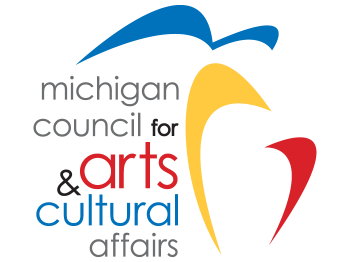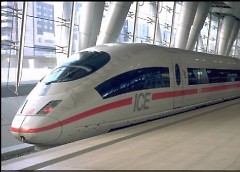This is part two of a five-part series that explores the effects of the automobile on Grand Rapids. In this part, we will explore how communities have been affected socially and physically by the car. We will also see how our downtown area has been built up around the car and efforts to create public spaces.
While I was serving in the United States Army I was stationed for two years in Schweinfurt, located in the German state of Bavaria. It took me a while to adjust to the German way of life. Europeans do not entertain the luxury of owning two trucks or setting up house in isolated neighborhoods. Obtaining a German driver's license and maintaining automobiles are very expensive; most houses and buildings are not designed to accommodate an automobile. The public transportation systems are phenomenal in Germany, and it is much more economically feasible and efficient to take advantage of alternative transportation.
Professor Lee Hardy of Calvin College has spent much time in Europe. He spoke to the automobile in America as an extension of privacy, individual freedom and monetary status. Automobiles isolate people from one another and spread out the population so citizens are inclined to live around people who share similar values. This self-selection is conducive to phobias about other groups of people.
The car has become a living room on wheels. The automobile has all the amenities you would need to disconnect from society. Televisions, video games and internet access are examples of this.
“We do our best to pull everything into our domain,” Hardy said.
My own experiences supported this. The typical German middle class home does not have a decked out entertainment center. Most German vehicles do not have monitor screens in the headrests. Germans are very sociable they enjoy public spaces like parks and swimming pools peppered throughout the city. It is not uncommon to have a stranger sit down and start a conversation with you at the park or pub. Germans do not like to sit in their homes or isolate themselves in an automobile. They prefer to mix with their fellow citizens regardless of background or demographic.
Hardy believes the loss or underdevelopment of public spaces and has discouraged intermingling between social classes, thus hurting our democracy. Our country and cities are built on the Greek and Roman model of democracy, which depended on interaction in public spaces. Automobiles allow people to disconnect from their fellow citizens. A democratic form of government cannot function if peers do not interact with one another.
Steve Faber, executive director of The Friends of Grand Rapids Parks, is intent on drawing people out of their homes.
“The goal of the Friends is to help Grand Rapids rebuild and sustain an exceptional system of parks and public spaces and, by extension, increase home values, improve citizen health, safeguard air and water quality, and strengthen the community’s ability to retain and attract residents, businesses and visitors,” says their Web site.
I asked Steve about pockets around town that are used for parking. I wondered if they could be utilized for anything that would better benefit the environment and the community.
Steve explained to me that there is a strong desire among Grand Rapidians to have more green space downtown.
“People are seeing the use of these spaces for other than just a space for a parking lot,” Steve explained. “We’re not coming together [as a population] anymore at locations such as church or work.”
He feels that parks in the central city and the surrounding neighborhoods provide citizens with a place to interact with each other and to socialize with their fellow citizens. Parks also encourage commerce and raise property values.
According to Steve, there were eight landscape architects on the city staff in the 1950s. This time period was also when flight from cities to suburbs began, made possible by the automobile. Flight led to city decay, and many of downtown's beautiful old buildings were torn down to build surface parking lots. Presently the city has no landscape architects on staff.
Grand Rapids is about 95% built out. Steve explained that the urban revitalization that Grand Rapids is experiencing is causing what is referred to as the "donut effect." As the city expands, the immediate suburbs are vacated by long time residents, who move further out. These suburbs become the low-income areas in the city because suburbs were built to be utilized by citizens with automobiles. The low-income residents lose the transportation factor that is needed for these areas.
Steve believes that we will be a slow-moving parking lot for the next 20 years. He does think we are going in the right direction.
Steve explained that Green Grand Rapids has served as a way of getting through the door to become a city that utilizes green space better and accommodates bicycle and pedestrians better. On September 19, 2009, I participated in an event called Parking Day that was hosted by The Friends of Grand Rapids Parks. Parking Day is a day in which citizens set up small parks in roadside parking spaces. It made me realize how much space a parking space actually takes up. It is amazing how much stuff you can fit in the space and what you can do with it. Steve said that he didn’t see parking day as an anti-automobile or anti-parking statement; much like it is celebrated in other parts of the United States. Steve saw it as a way to show downtown businesses and citizens how gray space could be used for green space and how it motivated citizens to be more active and interact with each other. I’m glad individuals like Steve are working hard to promote space being used for more than just a place to store an automobile. He is preserving and improving our park system which is essential to our survival as a city.
Part three of the five-part series will focus on solutions to problems discussed in the previous articles in the series.
Part I: The clash between the streetcar industry and automobile industry
Part II: The automobile's detrimental toll on community life
Part III: Ways to modify cities to accommodate alternative transportation
Part IV: Current efforts in Grand Rapids for strengthening alternative transportation
Part V: Did the car ever make sense?
The Rapidian, a program of the 501(c)3 nonprofit Community Media Center, relies on the community’s support to help cover the cost of training reporters and publishing content.
We need your help.
If each of our readers and content creators who values this community platform help support its creation and maintenance, The Rapidian can continue to educate and facilitate a conversation around issues for years to come.
Please support The Rapidian and make a contribution today.




Comments
Excited to read the rest of this series.
Great study, I can't wait to see the rest.
I've been a big bicycle advocate for years, and haven't driven a car regularly until very recently, after deciding that GR is not the most bicycle friendly city, nor is the public transportation where it needs to be (though it's been getting better).